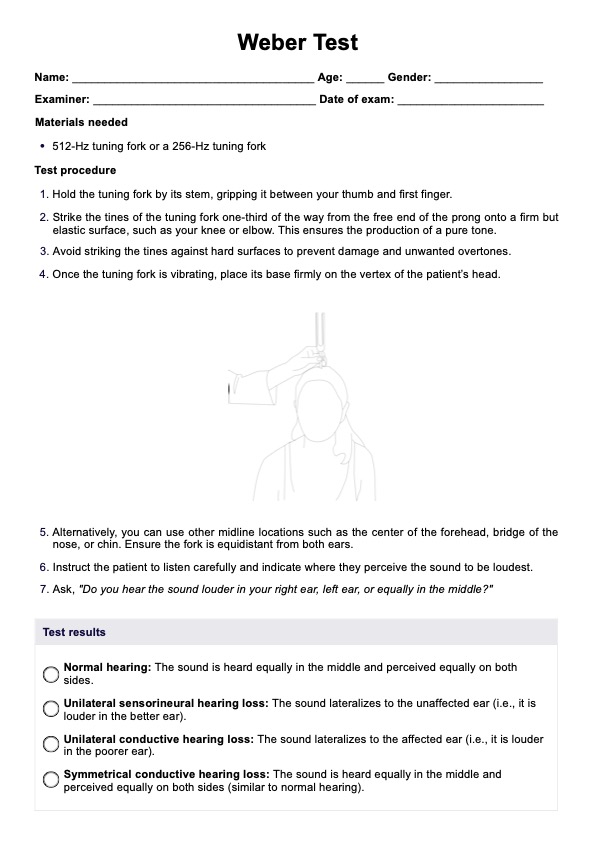The Weber Test assesses hearing loss by identifying whether sound lateralizes to one ear, helping to differentiate between sensorineural and conductive hearing loss. It evaluates the patient's ability to perceive sound through bone conduction using a vibrating tuning fork.

Weber Test
Discover the Weber Test, a key tool for diagnosing hearing loss. Download Carepatron's free PDF example to learn how it's performed and interpreted.
Weber Test Template
Commonly asked questions
The Weber Test helps determine whether hearing loss is unilateral and differentiates between sensorineural and conductive loss. The Rinne test compares air conduction to bone conduction to assess the type of hearing loss. The Weber Test focuses on lateralization, while the Rinne test evaluates the duration of sound perception.
The Weber Test is positive when the patient reports hearing the sound louder in one ear. Depending on the ear's condition, this indicates either unilateral sensorineural or conductive hearing loss. A positive result requires further investigation to determine the type of hearing loss.
EHR and practice management software
Get started for free
*No credit card required
Free
$0/usd
Unlimited clients
Telehealth
1GB of storage
Client portal text
Automated billing and online payments











